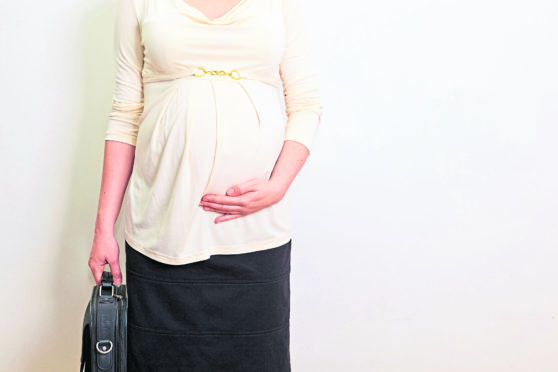A number of years ago, while I was on maternity leave with my second child, a promoted post became vacant at my place of work.
It was a position I was more than qualified and experienced for, yet the first I knew it had even been available was when I received an email congratulating the male colleague who had been appointed.
It was the second time maternity leave had affected my career. The first was when arrangements were being made for my absence – my job would be split across two people while I was off. One of those people was then promoted to a position higher than mine for taking on just part of my job. When I queried the justification for this I was told that “none of this would be happening if you weren’t going on maternity leave”.
The essence was suck it up; it’s your choice to have babies, therefore your choice is to miss out on career opportunities. But those two things are not equivalent. Having a child did not suddenly mean I was unable to do the job in question. Of course it may well have resulted that if I had been able to put my name in the hat for either position I would not have been successful. The difference is that at least then there would have been some fairness in the process.
And then there was the time I had thousands knocked off my salary because I wanted to go part time – that’s not just my wage becoming pro rata, it was money arbitrarily removed. There are many other such moments I could mention, which happened to me or other female colleagues. It took becoming a mum to discover that the ceiling women need to break through is not in fact made of glass, but a ton weight of nappies.
Despite more than 40 years of equality legislation, discrimination is still rife – just look at the pay gap for starters or the Equality and Human Rights Commission report published four years ago, which estimated that 54,000 women a year lose their jobs as a result of becoming pregnant and going on maternity leave. Now it’s believed the real figures may be being hidden by the widespread abuse of Non-Disclosure Agreements.
Those appalling legal documents usually employed by those seeking to cover up sexual assaults by preventing the victims from going public with their stories, are also being used by employers to silence women who have experienced maternity discrimination.
Joeli Brearley is the founder of the campaign group Pregnant Then Screwed, and her organisation has discovered that NDAs are common in pregnancy and maternity discrimination cases. She was quoted earlier this week in a report saying that “many well-known companies… use them regularly to cover up mistreatment of new mothers in the workplace.”
She went on to say that the public would be “very shocked if they knew what was going on behind the closed doors of some of the most well-known and loved brands in the UK.”
I’m not shocked. It’s easy to see NDAs being an obvious step for unscrupulous employers who know they would be publicly embarrassed by their reputationally-damaging actions if they were to be revealed. Nor am I surprised women sign them.
Returning to work after maternity leave can be a time of emotional turmoil. Women will feel pulled in different directions – the desire to care for their child and the desire to rediscover the person they were at work before babies. They will feel the pressure to prove all over again that they are still as capable to carry out their job as they were before they became a mum. They may even experience an all-pervading feeling of guilt, that no matter what, the choices they make will be the wrong ones. It will be even harder for those women who are doing the child-raising alone.
If they find that their self-confidence is being systematically chipped away by employers who are stuck in the 1950s, the option of taking redundancy money and getting a good reference in turn for their silence about being pushed out must come as a relief. But who knows the toll it takes on their mental health and their career at a later date?
Of course it is a choice to have children. But good employers don’t use that choice to abuse their female staff by demoting them, or piling on the pressure so they feel forced out. Good employers recognise that returning to work is an emotionally sensitive time for women, and offer them support as they juggle the changes to their lives.
Pregnant Then Screwed is now campaigning to extend the time limit for maternity-discrimination tribunal cases from three months to six months, giving women more time to consider their options when they’re out of the fug of maternity leave. And it’s calling on the government to set up a central monitoring body for the use of toxic NDAs.
You should sign their petition.
Gina Davidson is an award-winning journalist and a media and communications specialist.











